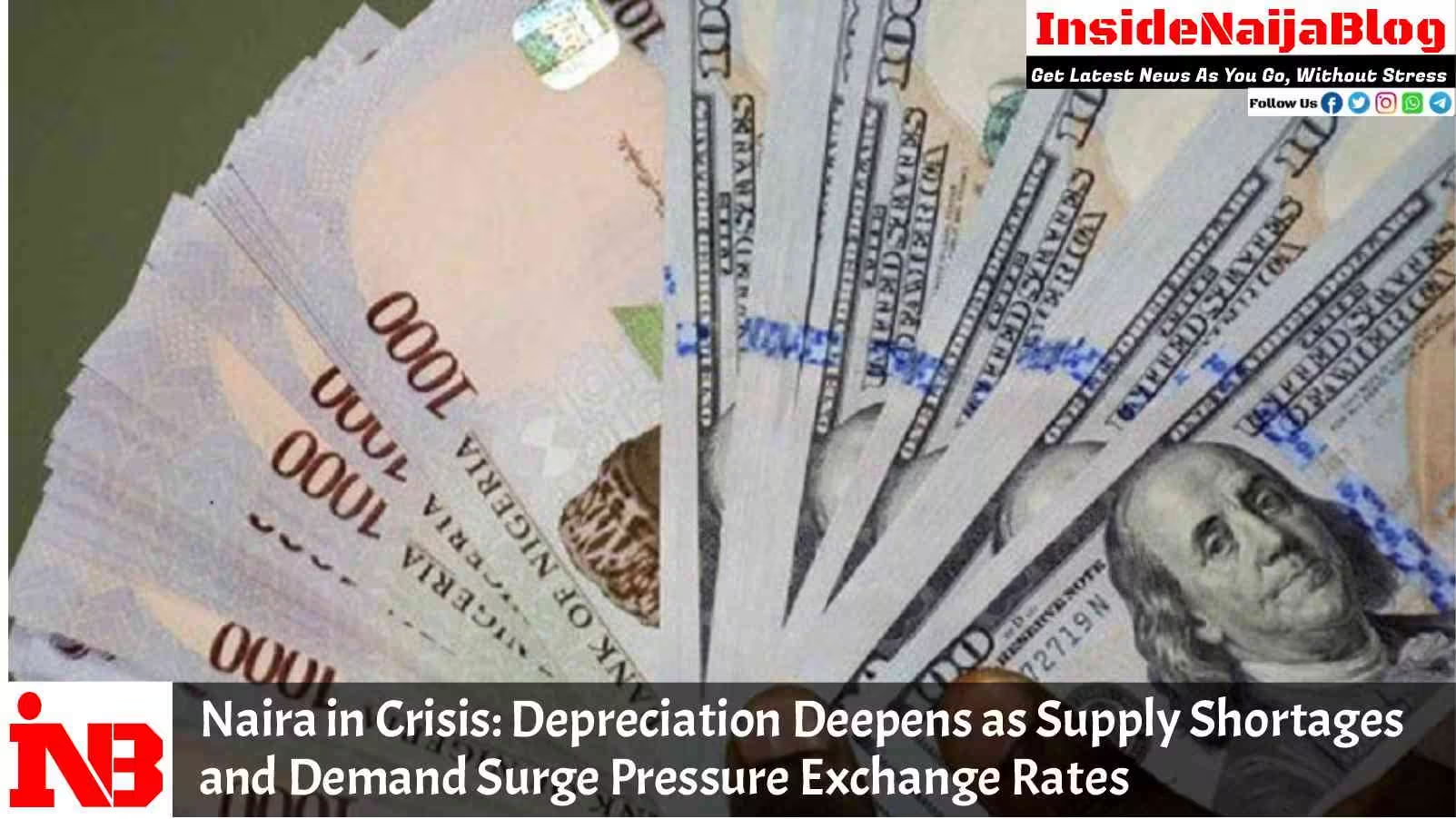The Nigerian Naira is under intense pressure as its value against the U.S. dollar continues to decline, hitting N1,740 per dollar in the parallel market at the end of last week. Despite minor gains in the Nigerian Autonomous Foreign Exchange Market (NAFEM), where the exchange rate improved slightly to N1,600 per dollar from N1,601.2, the overall trend shows a rapid depreciation of the Naira due to demand pressures and limited dollar supply. Analysts suggest the Naira could close the month at N1,750 per dollar, with further depreciation anticipated to reach N1,800 by year-end, making it one of the worst-performing currencies globally.
The Naira’s recent struggles reflect a dramatic turnaround from earlier in 2024 when it appreciated sharply. In February, the Naira hit a record low of N1,820/$1 but bounced back in March, strengthening to N1,240/$1 before depreciation resumed in April. Over the past year, the Naira has lost 70.5% of its value in the parallel market, dropping from N1,000/$1 in September 2023 to N1,705/$1 by the end of Q3 2024. The official NAFEM segment has also seen a year-over-year decline, with the rate depreciating by 104% from N755.27/$1 in September 2023 to N1,540.78/$1 in September 2024.
The causes behind the Naira’s depreciation are complex and rooted in both supply and demand challenges. Supply shortages have dominated discussions, especially as the Central Bank of Nigeria (CBN) has reduced its intervention in the forex market. The last retail Dutch Foreign Exchange auction by the CBN took place in August, as the bank has shifted to a “minimal intervention” strategy amid limited forex resources. On the demand side, Nigeria’s dependence on imports has created high demand for the dollar, particularly as businesses look to restock ahead of the holiday season.
Central Bank of Nigeria Governor Yemi Cardoso addressed the issue during the recent Monetary Policy Committee (MPC) meeting, noting a connection between Federal Allocation (FAAC) disbursements and increased demand in the forex market. Cardoso highlighted that monitoring FAAC disbursements could help understand how these allocations impact exchange rates, suggesting that fiscal actions are influencing demand pressures. The CBN has announced plans to closely monitor FAAC disbursements to better manage liquidity levels and mitigate exchange rate volatility.
Meanwhile, the Minister of Finance and Coordinating Minister of the Economy, Wale Edun, has pointed to supply issues as the root cause of Nigeria’s forex crisis. Edun emphasized that Nigeria, as an oil-producing nation, could alleviate the forex shortage by increasing its oil production, which would enhance foreign exchange supply and reduce pressure on the Naira. He argued that addressing the supply side would be more effective in stabilizing the exchange rate than simply focusing on demand factors.
Forex dealers report that shortages have driven more buyers into the parallel market, including large importers unable to access dollars through the official channels. The scarcity of dollars has exacerbated the Naira’s depreciation, with black market traders such as Mr. Liasu Moshood noting that demand from importers has surged as banks and Bureau De Changes (BDCs) fail to meet forex demands. Another trader, Mr. Idris Daud, projects that the dollar may hit N1,800 by December as importers secure foreign exchange to prepare for year-end activities.
The CBN is preparing to introduce an Automated FX Trading model next month to improve transparency and control in the forex market. This system, expected to go live in December, replaces the over-the-counter trading model that has been in place for nearly a decade. The CBN’s goal is to create a market-driven exchange rate that limits speculative trading and improves oversight. A two-week test run of the new system will commence in November, according to a CBN circular released on October 2, which outlined the initiative’s guidelines.
While this new model may help, dealers warn that only a significant increase in forex supply will address the underlying problem. As Nigeria grapples with limited inflows and ongoing demand, the Naira’s depreciation seems likely to continue, creating a financial strain for many Nigerians. The World Bank recently ranked the Naira among the worst-performing currencies in sub-Saharan Africa, a sharp reversal from the early 2024 period when it was briefly one of the world’s best-performing currencies.
For the foreseeable future, market participants and policy analysts alike remain concerned about how Nigeria’s fiscal and monetary policies will address these growing challenges, particularly as the Naira edges closer to historic lows.



